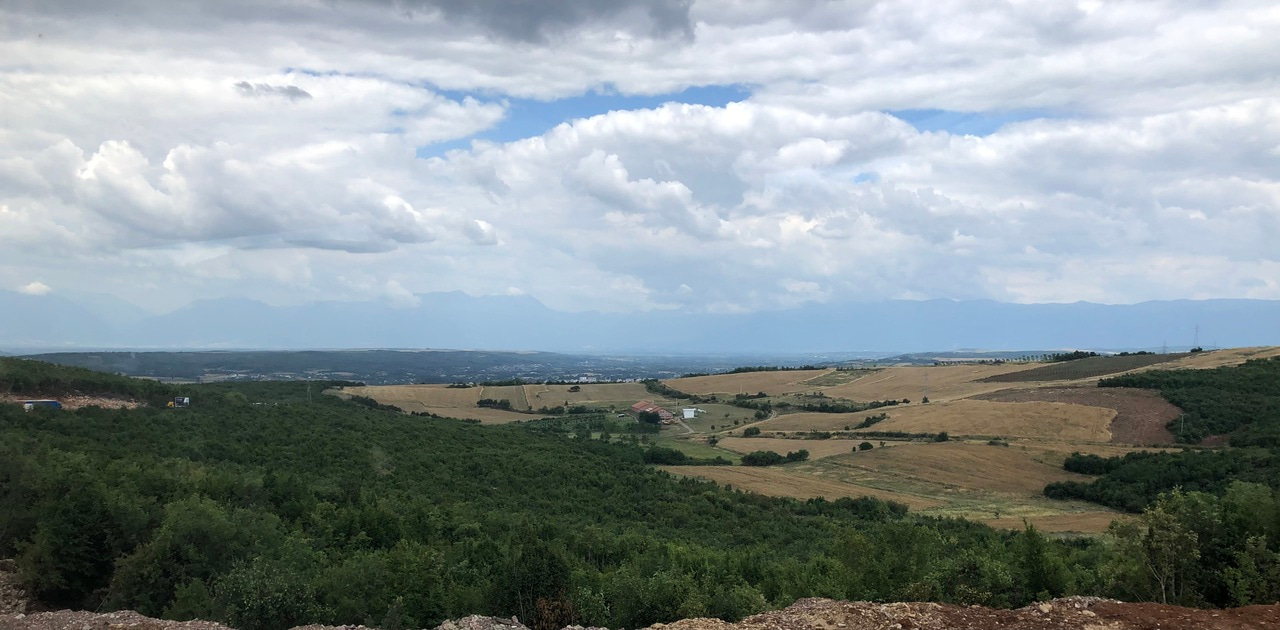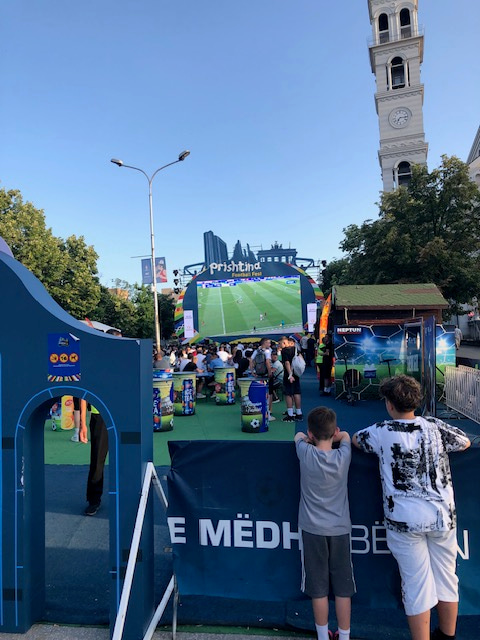Laidlaw Research and My Trip to Kosovo

My interest in the topic comes from an intersection of my current degree focus (modern history and international relations) and my keen interest in the Western Balkans, given my Balkan heritage and having written my high school thesis on the causes of the breakup of Yugoslavia.
I conducted my research in two parts. The first involved reviewing all relevant research on the topic to gain an academic understanding of the issues at play – a process which made me realise that the size of my initial focus on a broader examination of the effect of growing East-West divides on the dispute and of several external actors was too large. I therefore refined my scope to focus on one of those actors, Russia – motivated in part by my study of Russian language at sub-honours. The second component involved supplementing the research I had compiled from books, articles and journals with interviews on the ground in Kosovo with experts in the field from several different perspectives and professional backgrounds.
My trip began in Pristina, Kosovo’s capital. The centre of the city is a mix of cafes, restaurants and bars along the pedestrian street Bulevardi Nene Tereza, flanked on one end by the Kosovo Assembly. Between interviews, I visited the national library, bazaar, and Pristina’s many monuments and statues. I was particularly struck by the number of manifestations of support for the West, particularly the US – some stands on the boulevard sold US flags beside Kosovo ones. This support originates from the NATO armed intervention in Kosovo led by the US and then US President Bill Clinton with the goal of “forc[ing] a halt to the systematic and brutal repression and expulsion of Kosovo's people” by forces of the Federal Republic of Yugoslavia (comprising Serbia and Montenegro) under Slobodan Milošević, in a 78-day bombing campaign against Serbia and Montenegro that led to the withdrawal of Yugoslav forces from Kosovo and the end of the Kosovo conflict (1998-1999) (Clinton White House 1999). Indeed, there is a 15-metre-long poster and a statue of Clinton on “Bill Clinton Boulevard”, one of the busiest streets in Pristina. Tony Blair – another architect of the intervention – has a statue on “Blair Boulevard” in the city of Ferizaj, and at its unveiling two months ago met five Kosovar men with the first name “Tonibler”.
.jpg)
Bill Clinton statue and poster, photo taken by author
The European Football Championship was in full swing while I was in Pristina, with matches projected in a large fan zone similar to those in many other cities across Europe. No team in the tournament garnered more support among the Kosovars than Albania. Indeed, a 2011 census puts the population of Kosovo (excluding north Kosovo) at 92.9% ethnic Albanian (Minority Rights Group 2018), with a 2021 study finding that 55% of Kosovar respondents favour unification with Albania (Fetiu and Vrajolli 2022, 18).

Pristina fan zone, photo taken by author
The second stop on my trip was the ethnically divided city of Mitrovica. Split in two by the Ibar River, North Mitrovica sits at the edge of the predominantly ethnically Serb region of north Kosovo, while South Mitrovica is predominantly ethnically Albanian. The main bridge connecting both communities is currently only open to pedestrians and is monitored by NATO troops, while other bridges in Mitrovica serve as crossing points for vehicles. Indeed, the main bridge appears to serve a more symbolic purpose as a recent plan by the Kosovo government to reopen it to vehicle traffic was met with a large demonstration by Serbs in North Mitrovica. Most of north Kosovo’s inhabitants do not recognise the Kosovo government’s authority and view themselves as part of Serbia, not Kosovo. Kosovo itself declared independence from Serbia in 2008 after a period of international administration from 1999 onwards under United Nations Security Council Resolution 1244, a move so far recognised by 117 countries but not acknowledged by Serbia.

The main bridge in Mitrovica, photo taken by author
While in majority ethnic Albanian Pristina, the NATO bombardment is widely considered to have saved tens of thousands of lives from further conflict, in majority ethnic Serb north Kosovo this is seen quite differently. Many there view Serbia as a victim of NATO aggression and graffiti in North Mitrovica often features pro-Russian slogans or even Russian flags.
Before the conflict, the two communities in Mitrovica intermingled, and Serbian was spoken by many of both. This seemed quite apparent as an elderly waiter in a restaurant near the river beside the main bridge interacted with customers in both Albanian and Serbian. However, since 1999 this is much less the case in younger generations, and I am told in the future it is likely that they will communicate in English. During both my visits to Mitrovica, an atmosphere of calm was prevalent around the bridge; children played football while pedestrians crossed both ways. Nevertheless, the NATO presence in Mitrovica is a constant reminder that the dispute is still ongoing and that a lasting resolution between both sides does not seem imminent.
Clinton White House. 1999. “Winning the War and the Peace in Kosovo.” National Archives. Accessed August 14, 2024. https://clintonwhitehouse5.archives.gov/WH/EOP/NSC/html/nsc-07.html#:~:text=Confronted%20with%20a%20massive%20humanitarian.
Minority Rights Group. 2018. “Kosovo.” Minority Rights Group. Accessed August 14, 2024. https://minorityrights.org/country/kosovo-unrecognized-state/.
Dea Fetiu and Mentor Vrajolli. 2022. “Two Opposite Viewpoints: Overview on How Citizens See Kosovar Bilateral Relations with Serbia and with Albania?” Kosovar Centre for Security Studies. https://qkss.org/images/uploads/files/Barometer_2021_Kosovo_4_Eng_%282%29.pdf.


Please sign in
If you are a registered user on Laidlaw Scholars Network, please sign in
What an insightful reflection! It's interesting to read about the contrasts in perception between different communities and how history continues to shape their daily realities. I feel like you're really bringing a nuanced perspective to a topic that is often oversimplified. Great work!
Thank you, Princess!